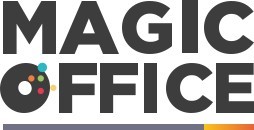
Understanding MRO in the UK Context
To effectively manage Maintenance, Repair, and Operations (MRO) categories in UK companies, it's essential to comprehend the unique context that these companies operate within. MRO encompasses a wide range of activities and items necessary for the smooth functioning of business operations, from acquiring essential spare parts to conducting vital maintenance tasks. Understanding this context helps optimize MRO category management, ensuring cost savings and operational efficiency.
UK-Specific MRO Challenges
In the UK, companies often face challenges related to MRO procurement, such as fluctuating costs, diverse supplier landscapes, and the need for stringent inventory management. Adopting effective MRO strategies can help tackle these challenges, allowing businesses to maintain optimal inventory levels and ensure timely supply of essential parts.
Optimizing MRO Spend
Given the dynamic nature of the UK business landscape, it's imperative to maintain a cost-effective approach to MRO. Implementing strategic sourcing and establishing long-term supplier relationships can significantly reduce costs, improve supply chain efficiency, and optimize MRO spend. Businesses must focus on enhancing their procurement processes to achieve these goals.
Data-Driven MRO Management
Utilizing real-time data can transform how UK companies manage their MRO categories, driving improvements in everything from stock levels to repair operations. Advanced data analytics tools provide valuable insights, allowing businesses to streamline their processes and make informed decisions regarding MRO inventory and procurement.
Explore top solutions for managing enterprise assets efficiently to further understand how MRO management can be enhanced through data-driven strategies and best practices.
Key Components of MRO Category Strategies
Developing an Effective Maintenance Repair and Operations Strategy
To skillfully navigate the MRO category landscape, UK companies must focus on several key components that can enhance operational efficiency and cost savings. Here, we'll look into the essentials of crafting a strategy that addresses these needs.
Inventory Management and Forecasting
Efficient inventory management is critical for minimizing excess stock levels and ensuring necessary spare parts are available. By employing real-time data and analytics, businesses can maintain accurate inventory levels and ensure MRO items are readily accessible when needed. This approach reduces downtime and boosts maintenance operations.
Strategic Sourcing and Supplier Relationships
Maintaining strong supply chain relationships is vital for effective MRO procurement. Engaging with suppliers and focusing on long-term partnerships can facilitate better terms, steady supply chains, and reduced costs. Strategic sourcing helps businesses to select suppliers who can offer quality parts and materials at competitive rates, contributing to substantial MRO spend reductions.
Cost-Effective Procurement Processes
Streamlining MRO procurement processes helps manage procurement costs while avoiding delays. Implementing standardized procedures and leveraging technology can aid in optimizing procurement activities and drive cost efficiencies. Efficient procurement practices ensure that businesses spend wisely and align their operations with overarching business goals.
Cost-Effective MRO Procurement
Optimising MRO Procurement for Cost Savings
When it comes to managing MRO procurement efficiently, businesses in the UK strive to keep costs under control while ensuring operational efficiency. This takes a strategic approach, focusing on understanding operational needs and aligning procurement processes accordingly.
A core element of effective MRO category management is assessing and refining procurement strategies. This begins with evaluating your current inventory management practices. Maintaining accurate inventory levels can curb excessive mro spend and eliminate overstocking of spare parts and other critical components. Accurate data and inventory assessments help in understanding which MRO items are essential to keep in stock, thus reducing costs associated with excess parts.
The most successful companies adopt best practices in sourcing and supplier management. Building strong relationships with reliable suppliers not only ensures a steady supply chain but also positions your business to negotiate better terms. Consider implementing real-time tracking systems, which offer businesses insights into stock levels and alert them to replenishment needs, further supporting cost-effective procurement.
Moreover, employing strategic sourcing methods is crucial in minimizing costs. This includes leveraging bulk purchasing opportunities, consolidating suppliers where feasible, and continually analyzing supplier performance to enhance operational savings. Revisiting your supply chain strategies can often uncover hidden opportunities for cost reduction and enhance overall maintenance efficiency.
For an in-depth understanding of improving procurement processes through structured feedback mechanisms, you might find it useful to look into enhancing feedback collection with a 5-star Google Form template. Implementing such methods can fine-tune supplier relationships and refine your procurement pipeline.
Leveraging Technology for MRO Management
Integrating Technology for Enhanced MRO Management
In the dynamic landscape of UK companies, leveraging technology is pivotal for effective MRO management. By adopting advanced tools, businesses can streamline their maintenance, repair, and operations processes, ensuring operational efficiency and cost savings.
One of the key aspects of integrating technology is the implementation of real-time data systems. These systems allow companies to monitor inventory levels and stock levels accurately, reducing the risk of overstocking or stockouts. Real-time data provides insights into MRO spend and helps in making informed procurement decisions, ultimately enhancing the supply chain.
Moreover, technology facilitates better supplier management. By using digital platforms, companies can improve their sourcing strategies, ensuring that they engage with reliable suppliers for MRO items. This not only optimizes the procurement processes but also strengthens the supplier relationships, contributing to a more resilient supply chain.
Another significant benefit of technology in MRO management is the automation of maintenance repair operations. Automated systems can schedule and track maintenance tasks, ensuring timely repairs and reducing downtime. This leads to improved operational efficiency and extends the lifespan of critical parts and equipment.
Incorporating technology into MRO category management also supports cost-effective strategies. By analyzing data, businesses can identify cost-saving opportunities and implement best practices in inventory management. This proactive approach helps in maintaining optimal inventory levels, minimizing excess costs, and enhancing overall business performance.
In conclusion, the integration of technology in MRO management is not just a trend but a necessity for UK companies aiming to achieve operational excellence. By embracing digital solutions, businesses can ensure efficient management of their MRO categories, leading to sustainable growth and competitive advantage.
Sustainability in MRO Practices
Embedding Environmental Principles in MRO Management
Incorporating sustainability into MRO practices is increasingly significant for UK companies striving for long-term success. A key component to achieving sustainability in maintenance, repair, and operations involves integrating environmentally friendly practices throughout the MRO supply chain. Here are some strategies to help align your MRO management efforts with sustainability goals:
- Optimization of MRO Inventory: Efficient inventory management can significantly reduce wastage and improve sustainability. By maintaining optimal inventory levels, businesses can minimize the environmental impact associated with excess stock and obsolescence. Real-time data tracking aids in better forecasting demand, helping to avoid overstocking spare parts and MRO items while ensuring availability for repair operations.
- Supplier Collaboration: Building strong relationships with suppliers who prioritize sustainability can further enhance eco-friendly procurement processes. Working closely with these suppliers not only supports sustainable sourcing but also enables the sharing of best practices across the supply chain. This collaborative approach can lead to innovative solutions in reducing the carbon footprint associated with MRO category management.
- Energy-Efficient Equipment: Leveraging advancements in technology can streamline operations and help UK companies cut down on energy consumption. Investing in energy-efficient equipment and ensuring regular maintenance increases operational efficiency while reducing environmental costs.
- Recycling and Waste Management: Implementing recycling programs for MRO items and parts plays a critical role in reducing waste. Encouraging proper disposal and recycling of materials can help in managing MRO spend responsibly, aligning operational strategies with corporate sustainability objectives.
Emphasizing these sustainability principles in your operational strategies not only enhances your company's environmental profile but also contributes to cost savings and increased efficiency, helping you stay competitive in the evolving business landscape.













